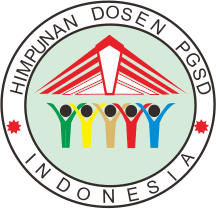Pembelajaran Berbasis Proyek melalui Pembuatan Alat Peraga Sistem Pernapasan untuk Meningkatkan Antusiasme Belajar Siswa SD
Abstract
This article is a best practice in implementing project-based learning (PjBL), on the human respiratory system material in the fifth grade at SD Inpres Pannujuang. This activity was carried out through a project to create a respiratory system teaching aid using simple materials. This practice aims to increase students' enthusiasm for learning through their involvement in the direct learning process. Students showed increased interest, active engagement, and high curiosity towards the material during the implementation. They collaborated in groups, communicated, and were very creative in making teaching aids. This activity shows that project-based learning not only enhances students' understanding of concepts but also boosts their enthusiasm for learning. This method can be used as an alternative for enjoyable, meaningful, and contextual IPAS learning.
Keywords
Full Text:
PDFReferences
Bell, S. (2010). Project-Based Learning for the 21st Century: Skills for the Future. The Clearing House, 83(2), 39–43. [2] Bell, S. (2010). Project-Based Learning for the 21st Century: Skills for the Future. The Clearing House: A Journal of Educational Strategies, Issues and Ideas, 83(2), 39–43. https://doi.org/10.1080/00098650903505415 [3] Gülbahar, Y. (2021). Project-Based Learning in Primary Education: Practices and Challenges. Education and Science, 46(209), 77-92. [4] Gülbahar, Y. (2021). Project-Based Learning in Science Education: Impact on Achievement and Attitudes. Journal of Educational Research and Practice, 11(1), 13–22. [5] Hwang, G. J., & Chang, H. F. (2021). Effects of Project-Based Learning on Students’ Learning Motivation, Engagement, and Academic Achievement in Science Classes. Educational Technology & Society, 24(1), 111-124. [6] Kuo, M. H., & Yang, C. Y. (2022). Project-Based Learning and Its Impact on Science Literacy in Elementary School Students. International Journal of Science Education, 44(4), 602-617. [7] Larmer, J., & Mergendoller, J. R. (2019). Project-Based Learning: A Handbook for Middle and High School Teachers. New York: Jossey-Bass. [8] Mergendoller, J. R., & Thomas, J. W. (2005). Managing Project Based Learning: Principles from the Field. Buck Institute for Education. [9] Mishra, P., & Koehler, M. J. (2020). Technological Pedagogical Content Knowledge: A Framework for Teacher Knowledge. Teachers College Record, 122(7), 1-20. [10] Rini, N. A. (2018). Implementasi Model Project Based Learning dalam Meningkatkan Kompetensi Sosial dan Hasil Belajar IPA di Sekolah Dasar. Jurnal Ilmiah Pendidikan Dasar, 5(2), 145–154. [11] Saban, A., & Aydın, H. (2020). The Effectiveness of Project-Based Learning in Science Education: A Meta-Analysis. Science Education International, 31(3), 203-217. [12] Suryani, S., & Suryadi, D. (2022). Penerapan Alat Peraga dalam Pembelajaran Sistem Pernapasan Manusia untuk Meningkatkan Pemahaman Siswa di Sekolah Dasar. Jurnal Pendidikan Dasar, 24(2), 211-220. [13] Thomas, J. W. (2000). A Review of Research on Project-Based Learning. San Rafael, CA: The Autodesk Foundation. [14] Xie, M., Li, X., & Zhan, J. (2020). The Impact of Project-Based Learning on Student Engagement and Academic Achievement: A Meta-Analysis. Educational Research Review, 25, 100-112. [15] Xie, M., Li, X., & Zhan, J. (2020). The Impact of Project-Based Learning on Student Engagement and Academic Achievement: A Meta-Analysis. Educational Research Review, 25, 100-112
Refbacks
- There are currently no refbacks.



